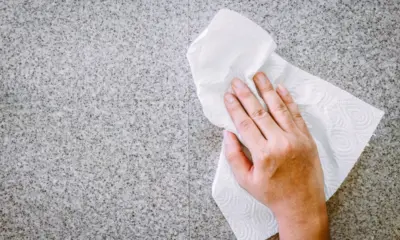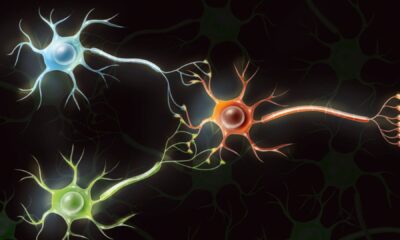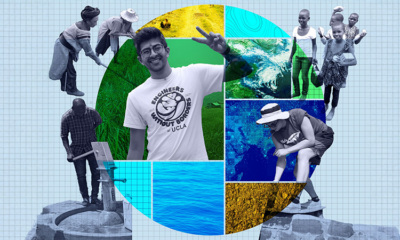Science
Scientists Discover Method to Transform Objects into New Materials

Scientists at Stanford University have made an extraordinary breakthrough, revealing a method that allows objects to transform into entirely different materials. This innovative process involves a unique chemical reaction that could potentially revolutionize material science and various industries.
The discovery, announced in a publication from April 2023, focuses on the bacterium Pseudomonas putida, which plays a crucial role in the transformation process. By harnessing the natural capabilities of this organism, researchers have demonstrated how it can facilitate changes in the chemical structure of carbon-based materials. These findings have left scientists “hugely surprised” at the potential applications.
A New Approach to Material Transformation
The technique developed by the research team allows for the conversion of everyday materials into different forms, opening doors to new possibilities in manufacturing and recycling. For instance, it could enable the transformation of plastic waste into useful products, significantly impacting environmental sustainability.
According to the lead researcher, Dr. Emily Chen, “This method could change how we think about materials and recycling. Instead of discarding used plastics, we might be able to convert them into high-value materials.” The implications of this research extend beyond mere curiosity; they suggest a way to address pressing environmental challenges.
The process works by manipulating the chemical properties of the materials involved, prompting a reaction that leads to the formation of new structures. This ability to induce material transformation presents opportunities in various sectors, including construction, electronics, and even healthcare.
Potential Applications and Future Research
The implications of this discovery are vast. Industries that rely heavily on raw materials could benefit significantly, as this method may reduce dependency on traditional resource extraction. Furthermore, it offers a sustainable approach to managing waste, aligning with global efforts to combat pollution and climate change.
The research team is now exploring further applications for this technique. Future studies aim to refine the process and identify additional materials suitable for transformation. They are optimistic that with continued research, this method could be scaled up for industrial use within the next few years.
As the world grapples with environmental issues, innovations like this highlight the importance of science in finding solutions. The work of the scientists at Stanford University not only showcases the potential of biotechnology but also reinforces the necessity of interdisciplinary approaches to tackle complex problems.
In summary, this groundbreaking research marks a significant step forward in material science. By demonstrating a practical method for transforming objects into new materials, the team has opened the door to a future where waste can be repurposed, and new products can be created from existing resources. The journey of further exploration and application is just beginning, and the scientific community watches closely as these developments unfold.
-

 Technology5 months ago
Technology5 months agoDiscover the Top 10 Calorie Counting Apps of 2025
-

 Technology2 weeks ago
Technology2 weeks agoOpenAI to Implement Age Verification for ChatGPT by December 2025
-

 Health3 months ago
Health3 months agoBella Hadid Shares Health Update After Treatment for Lyme Disease
-

 Health3 months ago
Health3 months agoAnalysts Project Stronger Growth for Apple’s iPhone 17 Lineup
-

 Health3 months ago
Health3 months agoErin Bates Shares Recovery Update Following Sepsis Complications
-

 Technology5 months ago
Technology5 months agoDiscover How to Reverse Image Search Using ChatGPT Effortlessly
-

 Technology3 months ago
Technology3 months agoElectric Moto Influencer Surronster Arrested in Tijuana
-

 Technology2 months ago
Technology2 months agoDiscover 2025’s Top GPUs for Exceptional 4K Gaming Performance
-

 Technology5 months ago
Technology5 months agoMeta Initiates $60B AI Data Center Expansion, Starting in Ohio
-

 Technology5 months ago
Technology5 months agoRecovering a Suspended TikTok Account: A Step-by-Step Guide
-

 Health5 months ago
Health5 months agoTested: Rab Firewall Mountain Jacket Survives Harsh Conditions
-

 Lifestyle5 months ago
Lifestyle5 months agoBelton Family Reunites After Daughter Survives Hill Country Floods





















